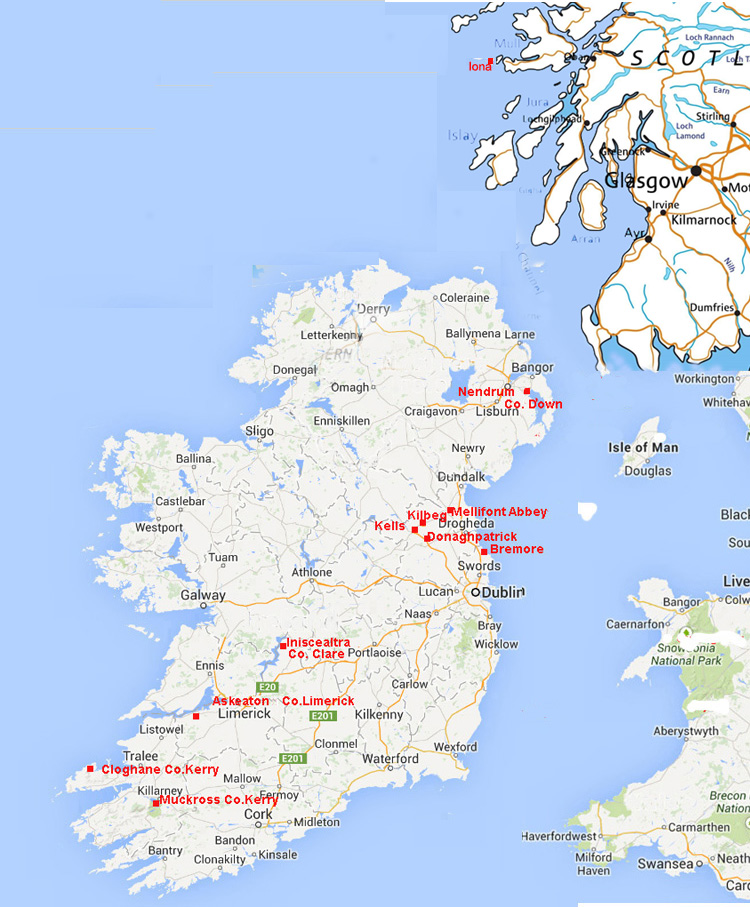Sundials in Ireland Medieval Sundials
Although
later than the Ancient Monastic dials, late medieval dials are generally less well
executed. Geometrically drawn, they are usually circular or semicircular in
shape, with 24 graduations and a hole in the centre to accommodate a gnomon (the shadow casting
pin).
They date to after the Norman conquest and before the 15th century.
Circular dials had the advantage that they could be used in either in an upright or
horizontal position.
Examples have been found in abbeys and large monasteries carved
into the building fabric and also being re-used as grave markers in old burial grounds.
Scratch dials (also known as mass
dials) are a rather basic form of sundial which were crudely scored into south facing
stonework of village churches near the entrance door. Delineated,
probably empirically, to show some form of unequal hours, they are event
markers rather than true time keepers. While common in England where thousands
of examples are known, they are extremely rare in Ireland probably because of a
lack of surviving stone built medieval churches.
If you
know the location of a sundial in Ireland (NOT a mass produced
DIY Store garden ornament) please email it to me
(Click here to email
M.J.Harley) - a
member of British Sundial Society 




